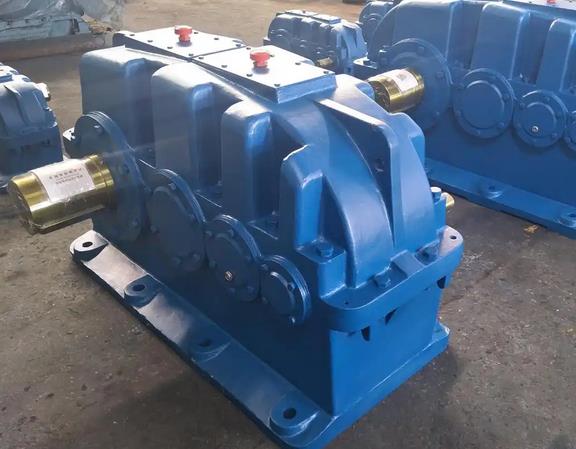ZFY series hard tooth surface gear reducer ZFY280-224-I gearbox lubrication system common faults
The common faults of the lubrication system of ZFY280 reducer are as follows:
oil leakage
Oil seal and bearing wear: Low coaxial accuracy between the reducer and the driving or driven device can cause oil seal and bearing wear, leading to oil leakage. In addition, poor lubricating oil quality and high impurities can accelerate oil seal wear and lead to oil leakage.

Seal damage: Damage to the sealing gasket and O-ring can cause lubricating oil to seep out from the joint surface.
Loose bolts: Loose bolts on the joint surface can cause gaps in the connection area, leading to lubricant leakage.
Excessive oil level: Excessive lubricating oil can generate excessive stirring heat during operation, causing oil to leak through the oil seal.
Oil temperature too high
Excessive load: If the decelerator operates at high load for a long time, it will generate too much heat inside, causing the oil temperature to rise.
Insufficient oil level: Insufficient lubricating oil level cannot meet the lubrication needs of various components of the gearbox, which will intensify the friction between components, generate a large amount of heat, and cause the oil temperature to rise rapidly.
Poor oil quality: Poor quality of lubricating oil or grease, poor heat dissipation and lubrication performance, cannot effectively remove heat and reduce friction, which can lead to high oil temperature.
Poor heat dissipation: Installing the gearbox in a poorly ventilated environment or in the presence of a high temperature source can affect its heat dissipation effect and cause the oil temperature to rise.
Deterioration of oil quality
Impurities mixed in: Dust, metal particles, and other impurities in the working environment of the gearbox may enter the lubricating oil, reducing its lubrication effect and accelerating component wear.
Moisture intrusion: If the equipment is not tightly sealed, moisture may enter the interior of the gearbox, causing the lubricating oil to produce acidic substances, corrode metal parts, and also cause the lubricating oil to emulsify, damaging its lubrication performance.
Oxidation deterioration: Lubricating oil is prone to oxidation reactions after prolonged use or exposure to high temperatures, resulting in the formation of substances such as gum and asphaltene, which deteriorate the oil quality and reduce its lubrication performance.
Insufficient lubrication
Oil pump failure: Oil pump damage, impeller wear, or oil pump motor failure can cause the oil pump to malfunction or output insufficient oil, resulting in insufficient lubrication of various components of the gearbox.
Oil circuit blockage: Oil pipe blockage, filter blockage, or foreign objects in the oil passage can hinder the normal flow of lubricating oil, resulting in poor lubrication of some components.
Low oil level: Failure to replenish lubricating oil in a timely manner or oil leakage can cause the oil level to be lower than normal, which can result in insufficient lubricating oil for components such as gears and bearings.
In addition, wear caused by large clearances between the gearbox installation shaft and bearings or between gears may also be due to lubrication system failures. Poor lubrication can exacerbate friction between components, leading to increased wear and clearance.

